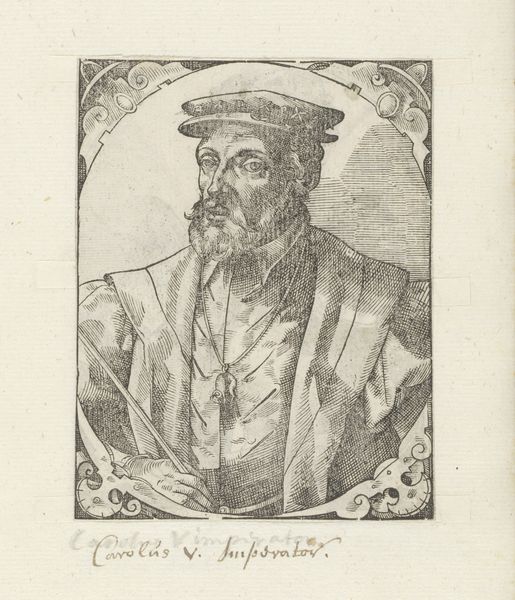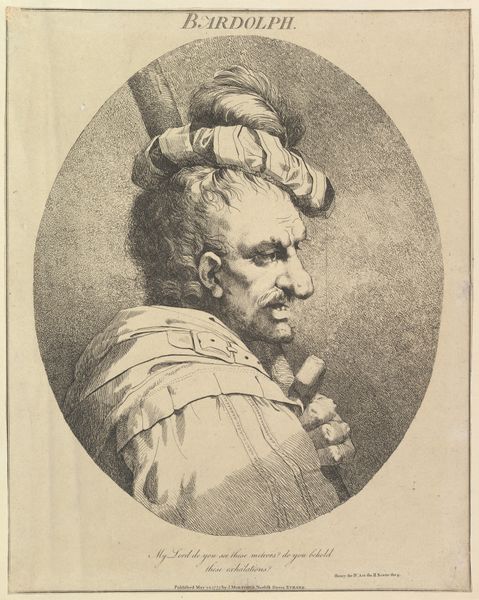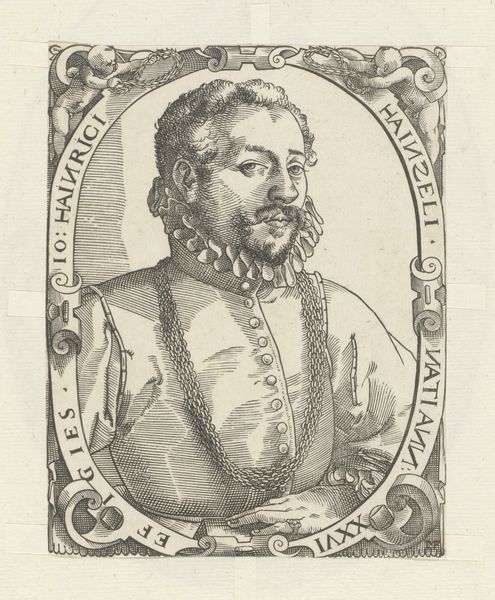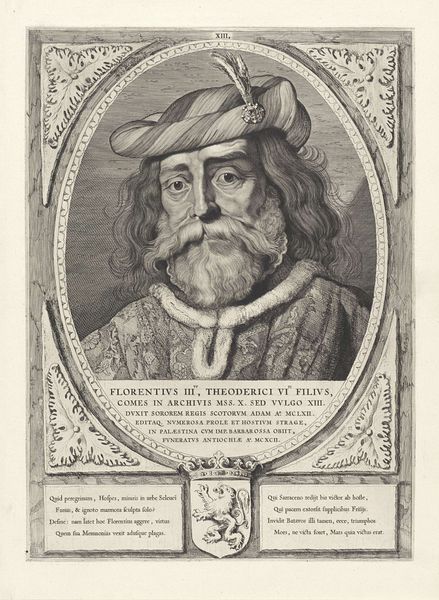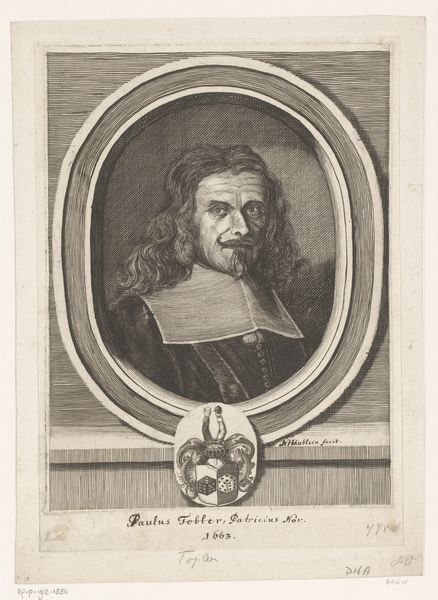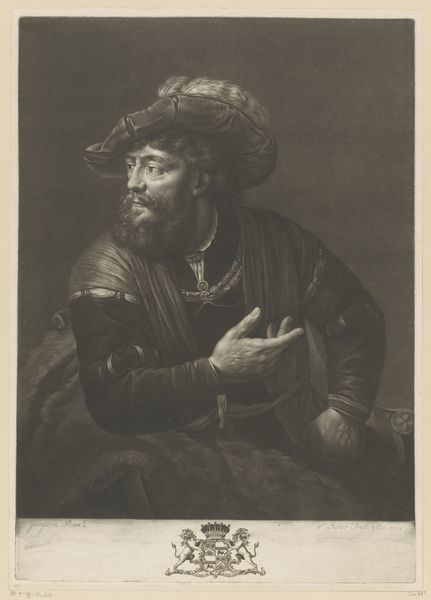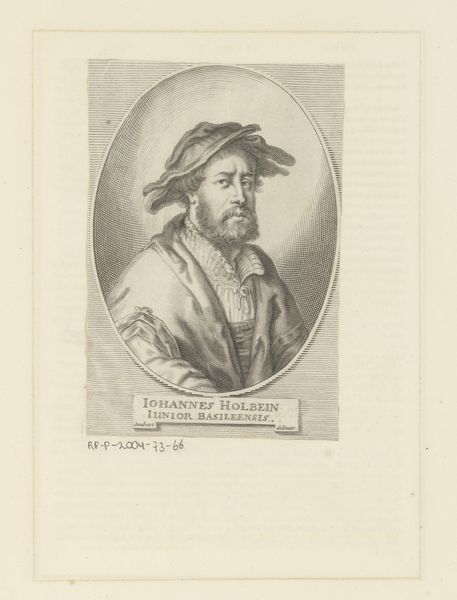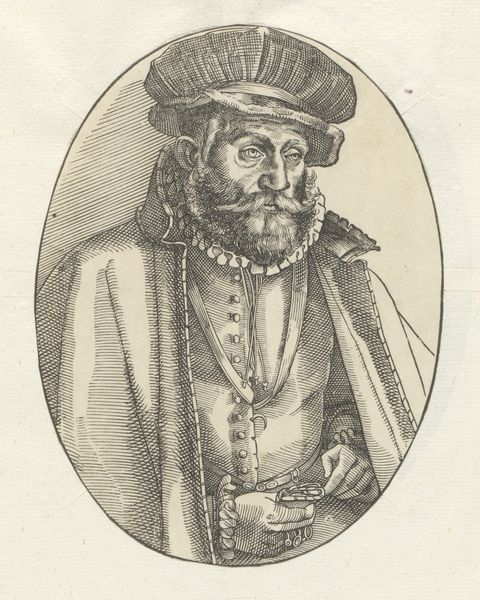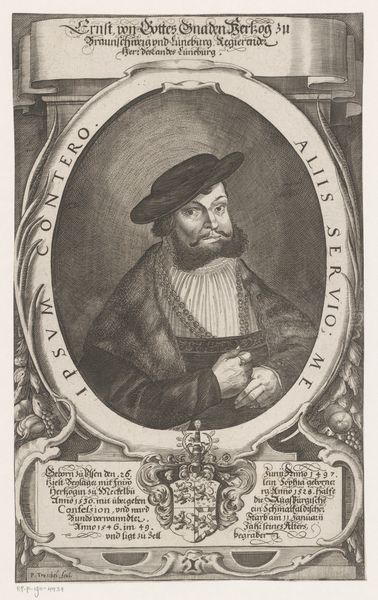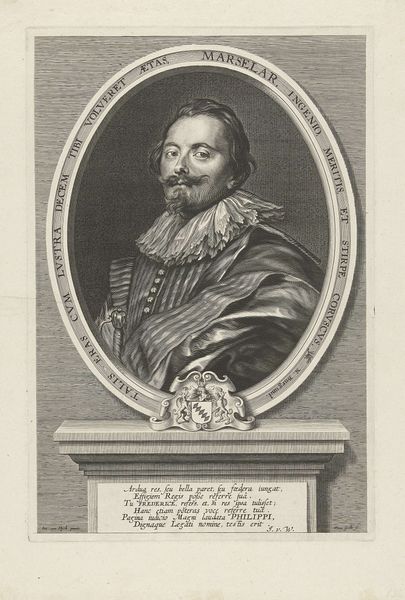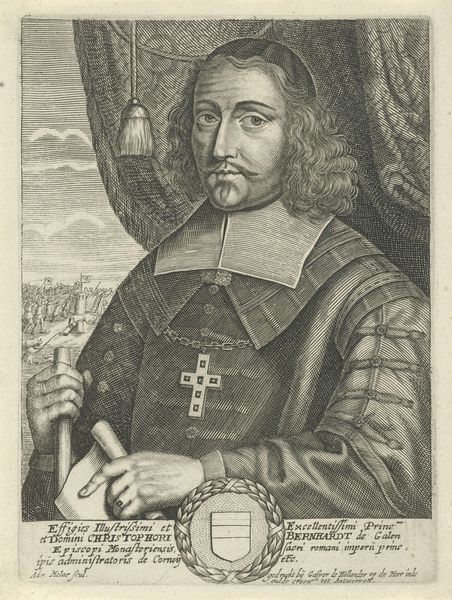
Shylock (from "Twelve Characters from Shakespeare") 1776
0:00
0:00
drawing, print
#
pencil drawn
#
drawing
#
toned paper
#
light pencil work
# print
#
pencil sketch
#
old engraving style
#
personal sketchbook
#
portrait reference
#
pencil drawing
#
men
#
portrait drawing
#
pencil work
Dimensions: sheet: 15 3/4 x 12 3/8 in. (40 x 31.5 cm)
Copyright: Public Domain
John Hamilton Mortimer created this print of Shylock in the late 1700s, using etching and engraving. These printmaking methods are themselves suggestive of the play’s themes, involving as they do the transfer of value from one surface to another. Look closely, and you can see the different qualities of line that Mortimer achieved. Etching is an intaglio process, where acid eats away at the metal plate, creating lines that hold ink. Engraving, by contrast, is a direct cutting of the metal. The combination of the two allows for a range of tones and textures, from the soft shading of Shylock’s face to the crisp lines of his clothing. Notice how Shylock’s hand clutches a purse, a sign of his profession as a money lender. The print is a powerful depiction of avarice and the social alienation of capitalism. Mortimer is not just showing Shylock the character, but also the economic forces that shape his identity. The meticulous, labor-intensive printmaking process mirrors the painstaking accumulation of wealth that defines Shylock's existence. Understanding the processes of making, and the social conditions in which they are employed, help us to unpack the broader historical context of art.
Comments
No comments
Be the first to comment and join the conversation on the ultimate creative platform.
